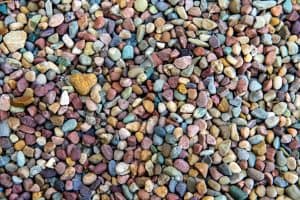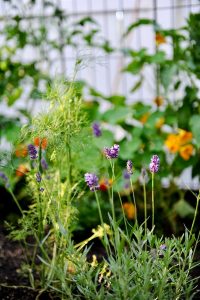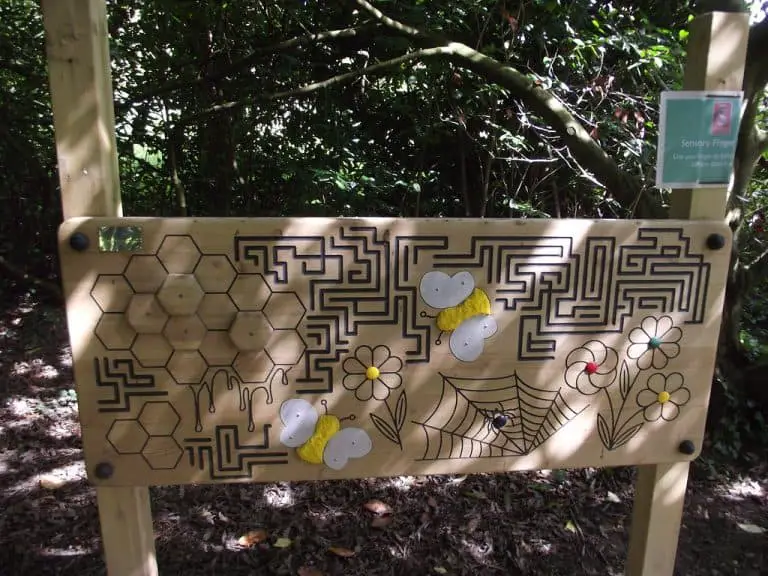A DIY outdoor sensory wall and sensory garden are fantastic additions to any outdoor space, whether it is a family backyard or a school garden. Sensory gardens and walls provide children and people of all ages with a stimulating and engaging environment that appeals to all the senses. In this blog post, we will delve into the process of creating your own sensory garden and sensory wall, providing sensory garden ideas and discussing various plants, textures, and features that can be incorporated into your unique sensory space.
I. The Importance of Sensory Gardens and Sensory Walls
Sensory gardens and walls are specifically designed to stimulate individual senses and provide a variety of sensory experiences. These spaces often include interesting textures, colors, scents, sounds, and even edible plants that cater to the five basic senses: sight, smell, touch, taste, and hearing. Sensory gardens and walls are particularly beneficial for children, as they help develop sensory processing skills, encourage creative play, and provide opportunities for social interaction.
II. Gathering Materials and Ideas for Your DIY Outdoor Sensory Wall and Sensory Garden
Before diving into the construction of your sensory wall and garden, it’s essential to gather materials and brainstorm ideas that will make your space unique and engaging. Consider incorporating a variety of sensory experiences, including:

- Textures: rough seedpods, smooth pebbles, and soft ornamental grasses
- Visual appeal: bright and bold flowers, dark green foliage, and interesting plant shapes
- Auditory elements: wind chimes, trickling water features, and bird feeders to attract birds
- Aromatic plants: fragrant flowers, herbs, and shrubs
- Edible plants: fruit trees, vegetables, and edible flowers
When choosing plants for your sensory garden, consider both the sensory experiences they provide and their suitability for your garden space. Ensure that the plants you select will thrive in your climate and soil conditions and are safe for children and pets.
III. Designing and Planning Your DIY Outdoor Sensory Wall and Sensory Garden
Once you have gathered your materials and ideas, it’s time to start designing your sensory space. Sketch a garden layout that incorporates raised beds, stepping stones, water features, and other elements that will provide visual interest and engage multiple senses. Group plants with similar needs (such as sunlight and well-drained soil) together, and consider how the plants will look throughout the year, as many sensory gardens feature plants with different blooming times to maintain visual appeal all year long.
In addition to your sensory garden, plan the design and location of your DIY outdoor sensory wall. Select a suitable outdoor wall or fence, and create a layout that incorporates interesting textures, colors, and interactive elements. Remember to consider accessibility and age-appropriateness when planning your sensory wall.
IV. Constructing Your DIY Outdoor Sensory Wall and Sensory Garden
With your design and materials in place, it’s time to start constructing your sensory garden and wall. Begin by preparing your garden space, clearing any weeds or debris, and amending the soil if necessary. Plant flowers, shrubs, and trees according to your garden layout, taking care to provide enough space for each plant to grow and thrive.
For your DIY outdoor sensory wall, securely attach your chosen sensory items and interactive elements to the wall or fence. Consider using weather-resistant materials and finishes to ensure your sensory wall can withstand the elements and remain engaging for years to come.
V. Maintenance and Safety Considerations for Your Sensory Garden and Wall
To keep your sensory garden and wall safe and enjoyable, it’s essential to regularly check for loose or damaged items, clean and sanitize surfaces, and ensure that the surrounding play area is secure. Regularly prune and deadhead plants, and replace any plants that do not thrive in your garden space.
VI. Creative Ideas and Inspirations for Your Sensory Garden and Wall

There are endless possibilities for designing a unique and engaging sensory garden and wall. Consider the following ideas and inspirations to make your sensory space truly one-of-a-kind:
- Themed sensory gardens: Create a sensory garden centered around a specific theme, such as a nature, music, or color theme. Choose plants and sensory wall items that fit the chosen theme and provide a cohesive sensory experience.
- Collaborate with your child: Involve your child in the design and construction of your sensory garden and wall, allowing them to choose their favorite plants, colors, and textures.
- Incorporate sensory experiences that appeal to all the senses: Ensure that your sensory garden and wall cater to all five basic senses by including a variety of plants, textures, and elements that stimulate sight, smell, touch, taste, and hearing.
- Include interactive and educational elements: Incorporate bird feeders, wind chimes, and other interactive features in your sensory garden and wall, providing opportunities for children to learn about nature and the environment.
VII. Choosing Plants for Your Sensory Garden
Selecting the right plants for your sensory garden is essential to create a stimulating and engaging space. Consider the following sensory garden plants:

1. Ornamental grasses: These plants provide interesting textures and sounds, with their wind rustling through the leaves creating a calming auditory experience.
2. Curry plant (Helichrysum italicum): This plant has a strong curry scent and silvery-grey foliage, providing both aromatic and visual interest.
3. Bright and bold flowers: Plant flowers with vivid colors, such as echinacea purpurea (purple coneflower), apple mint, and pineapple sage, to create visual appeal and attract pollinators like butterflies.
4. Edible flowers and plants: Incorporate edible plants and flowers, such as pot marigold, chocolate cosmos, and butterfly weed, to engage the taste buds and provide opportunities for hands-on learning.
5. Aromatic plants: Include aromatic plants like lavender, rosemary, and lamb’s ears, which release their scents when touched.
6. Seed heads and rough seedpods: Plants that produce interesting seed heads, such as echinacea purpurea (purple coneflower) and chocolate cosmos, provide tactile interest and can be incorporated into your sensory wall.
VIII. Conclusion
Creating a DIY outdoor sensory wall and sensory garden is a rewarding and engaging project that can provide endless entertainment and learning opportunities for children and adults alike. By incorporating a variety of sensory experiences, interesting textures, and plants that cater to the five basic senses, you can create a unique outdoor space that stimulates individual senses and encourages exploration and play.
Other suggested articles:


